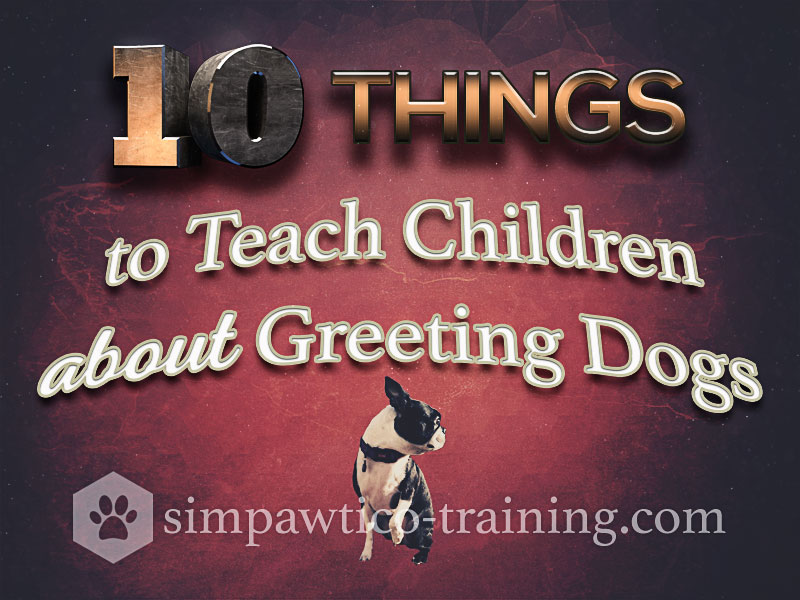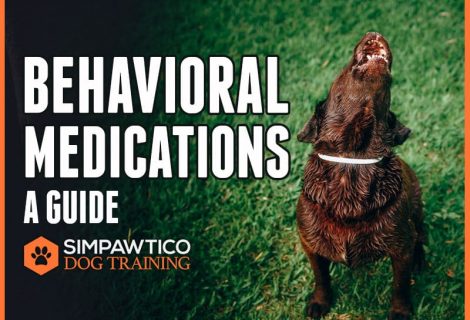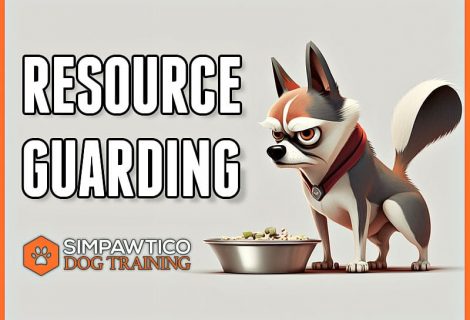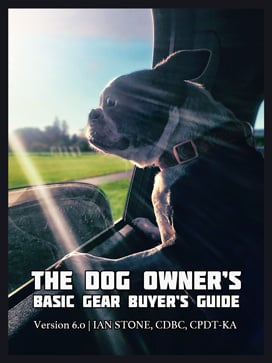Back in my “big-box-retail” days when I was trainer there I saw a lot of dogs come into the store. Concurrently, I saw a lot of interactions between dogs and people that, frankly, made me cringe. The ones that made me stiffen up and brace for impact, that kept me up later that night? Children greeting dogs.
To this day, educating children and their parents how to navigate around dogs in public is amongst my most important goals as a teacher/trainer.
Unfortunately, children with friendly dogs are at greater risk because they generally assume that all dogs are like theirs at home. All dogs must be greeted politely and with respect for their space. The worst part about potential situations is that oftentimes a child does something that would piss off even a human, and yet when the dog reacts and lashes out we blame the dog and punish it. For the sake of the children, and for the sake of the dogs, we must take every opportunity to make sure interactions are positive.
Here we go, 10 things to teach your children about dogs:
1: Do Not Run Up
Never run up to a dog you don’t you don’t know. It freaks most dogs out and puts them immediately on the defensive. Full disclosure: if a child I didn’t know came running up to me I’d be alarmed too.
2 & 3: Always Get Permission, and Let the Dog Make First Contact
The two golden rules of dog interaction, according to Dr. Sophia Yin, DVM, MS: “Never pet a dog without the owner’s permission, and always let the dog make first contact” (p. 26).
These two rules are truly significant. It’s so important and civil to teach children to ask permission. A child should NEVER just walk up to a dog they don’t know without any kind of warning. I have seen this so many times!
It’s also a critical master key in working with dogs at any level that once we initiate an encounter, we let the dog close the gap. It’s amazing how just that one simple move will defuse a dog’s uncertainty. Teaching a child these two guidelines will generate so much goodwill it’s unbelievable.
4: Don’t Approach a Dog That’s Alone, Especially if it’s Restrained
If a dog is alone, we cannot ask permission from the owner. There’s no way to know if it’s aggressive or reactive. We cannot know what its threshold is or how wide its trigger zone is. That is enough uncertainty to just leave it alone.
If a dog is restrained either by a leash or a tie-out, there’s also the potential for leash-reactivity or aggression. The primary difference between the two is that reactivity indicates the dog wants to get closer, possibly to interact, but cannot and gets frustrated. Aggression indicates that the dog wants to go away from you (or make your child go away) but obviously cannot, and so its frustration becomes dangerous. Both conditions look awfully similar.
Best bet: just don’t. Leave it alone.
The games kids often play with a restrained dog will also trigger it—rough housing in front of it, shouting and being loud, or teasing it by jumping forward and away. Incidentally, this is how you train a protection dog to bite! Not a good thing.
Again, just don’t. Teach kids to just let it be. Which brings us to…
5: Let Sleeping Dogs Lie (and Eating Dogs, and Playing Dogs…)
Approaching a sleeping dog can startle it, leading to a defensive action. Defensive actions often cause a startle reaction in the person approaching which, to a dog, just confirms their suspicion that the person is probably trouble.
Dogs that are eating, are playing with toys, or are chewing on a bone could potentially have resource guarding issues too. Children often think a dog contentedly engaging in some doggie activity is safe. It’s like walking up and hugging mommy while she’s working on a hobby. If the dog is not well known, we should teach children to just leave it alone. Ideally, we should also teach dogs not to resource guard…but barring that I’d say always err on the side of caution.
6: Initiate Correctly.
Dogs have a whole catalog of body signals they send each other. They’re programmed to read and decode these signals. When one dog approaches another they can intuit intentions much faster and more fluently than they can with humans. For humans, though, a dog goes by a) prior experience and b) it’s gut reaction to what it sees. We can’t always control its prior experiences, but we can at least adopt body postures that communicate as best we can that we’re friendly:
- Do not bend over a dog.
- Turn your body to the side.
- Kneel down on one knee (kids may only need to do this with small breeds).
- Do not to reach over a strange dog’s head.
- Offer a closed fist, palm down, at about nose level and allow the dog to close the gap to sniff.
- If we’re still all good at this point, pet it on the chin and chest (not on the head),
- If we’re still good past that, pet down the side of the body.
Don’t try to act like a dog. You’re not fooling anyone, least of all the dog. Part of living with each other is that we develop common means of communication. Just see yourself from their eyes: looking up at a looming giant (an adult), or a short, noisy, probably smelly animal (a child).
7: Don’t Take Anything Personally.
If a dog owner says, “No, you can’t pet my dog,” it’s not the end of the world. Don’t take it personally. It most likely has nothing to do with you. The owner knows their dog better than you or your child. Teach your children to respect this and to not get too upset about it. If someone says, “no,” a child should just say, “Ok,” and call it good. Remember: it’s an owner’s prerogative to refuse! It is not a right to pet any dog in public. Touching a dog is always an earned privilege.
Conversely, if the person says “yes” but the dog pulls away, that’s ok too. Don’t take it to mean that you’re not likable. If the dog growls or curls its lips, be grateful! That dog is telling you he’s not ok. He’s communicating with you! Isn’t that a million times better than just reacting and doing something worse? Children need to understand this and understand to back off. It’s not that the dog doesn’t like you or your child. There are countless things about any given scenario that could be spooky for that dog. We need to respect that.
PARENTS: DO NOT BE PASSIVE AGGRESSIVE WITH DOG OWNERS FOR YOUR CHILDREN. I remember so many instances where I saw a child ask permission, and the owner said “I’m sorry honey, not today.” What was an amicable, polite exchange that should’ve stopped there suddenly became uncomfortable when the child’s parent went on to say, “Oh but he just wants to say hi,” or “But she really wants to.” Seriously, guys?! Come on. How disrespectful! You’re creating tension in a situation where there wasn’t any. And if that dog does something stupid you know damned well the dog is the one that will be punished.
Don’t be this parent. Get out of your ego and teach your children to do the same.
8: If a Dog Pulls Away, Don’t Advance on it.
It’s super common for a greeting to go really well and after a few seconds the dog turns and takes a few steps away. At this point children usually go after it and say, “It’s ok, it’s ok.”
STOP THAT.
When a dog moves away she’s signaling that she needs a second to catch her breath, just a little space to decompress. A dog may turn around and come back, or she may just signal that she’s had enough. Teach your children to remain stationary. Kids like to follow, especially the youngest ones. Toddlers tend to toddle, you know? When a dog establishes a need for space, no matter how small, encroaching into that circle immediately induces stress. Thus, the likelihood of trouble increases.
If the dog comes back, then she’s saying she’s cool with the situation and just needed a second. If the dog doesn’t come back, then we need to respect the dog’s feelings.
9: Keep it Short.
Greetings shouldn’t be allowed to just go on and on. Encounters should ideally be brief. Let’s teach children to say hi, show a little love, and move on.
10: Say, “Thank You.”
This last one is really just because I like to see polite children, and not enough of them are. Hell, there aren’t enough polite adults out there! Speaking of which, please realize that all of these guidelines are equally applicable to adults. Everyone, not just the kids, should understand the finer points of greeting a dog. And parents, please…PLEASE do your part to teach your kids by modeling the correct behavior.
What do you think? Did I leave out anything important regarding children greeting dogs? Leave a comment below and start the discussion!
On a final note:
I highly recommend the book, How To Behave So Your Dog Behaves by Dr. Sophia Yin, DVM, MS. I have this book in my professional library and I recommend it to regular dog owners, not just trainers. It’s very accessible, an easy read, and pretty much gold on every page.
Affiliate Disclosure: Some of the links in the post above are “affiliate links.” This means if you click on the link and purchase the item, I will receive an affiliate commission. Regardless, I only recommend products or services I use personally, and that I believe will add value to my readers. I am disclosing this in accordance with the Federal Trade Commission’s 16 CFR, Part 255: “Guides Concerning the Use of Endorsements and Testimonials in Advertising.” Your support in purchasing through these links enables me to keep simpawtico-training.com running so I can deliver great content to you free. Thank you!










A few years ago, I took part of a beginners dog training class when my dog was five months old. Both my dog and I learned lessons taught by you that strengthened not only our bond with one another but laid down a solid foundation for further training.
I can’t wait to bring my dog again to you for further her training. My goals are for her to earn the good citizens award and also become a certified service dog.
See you soon. -Carmen